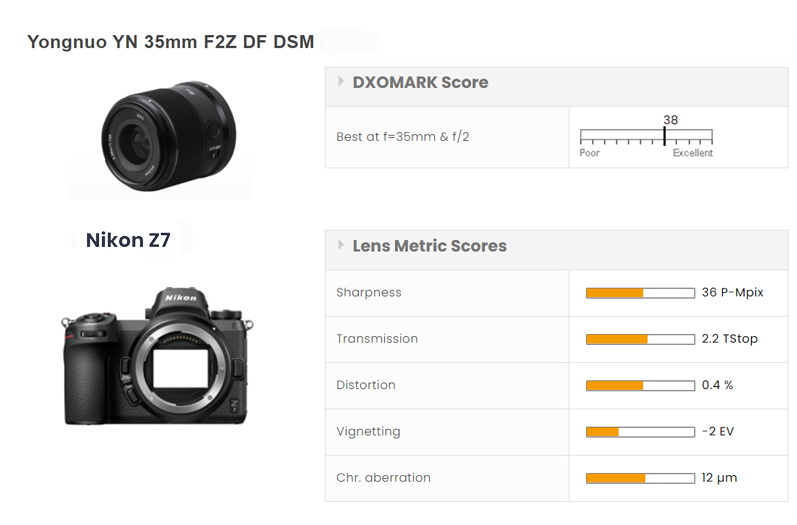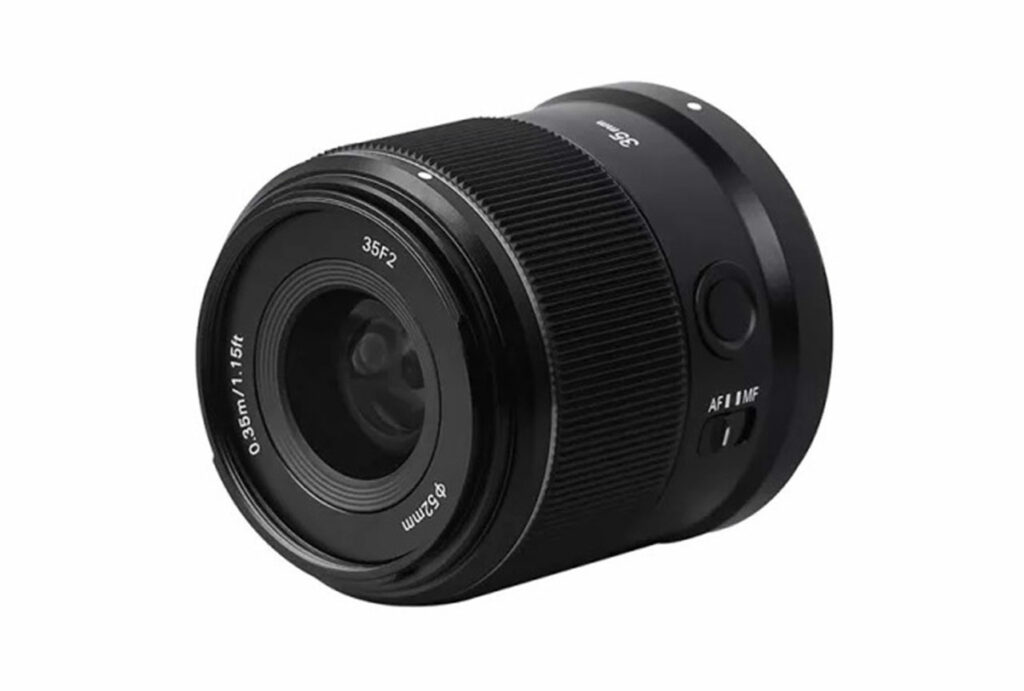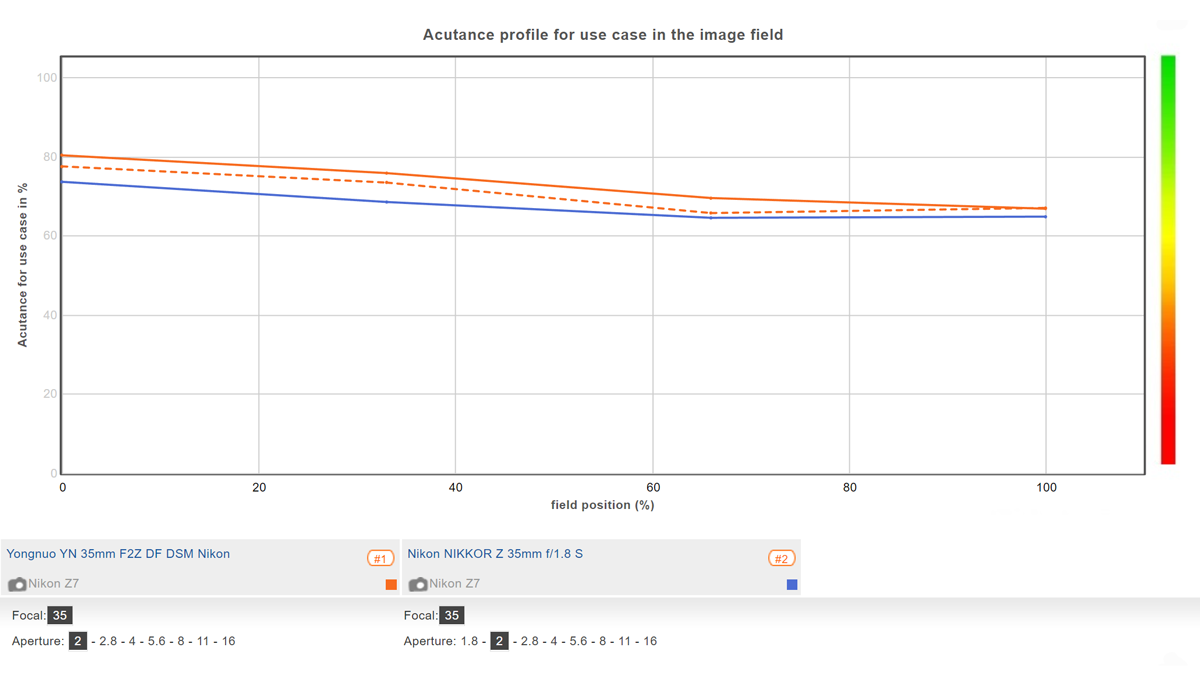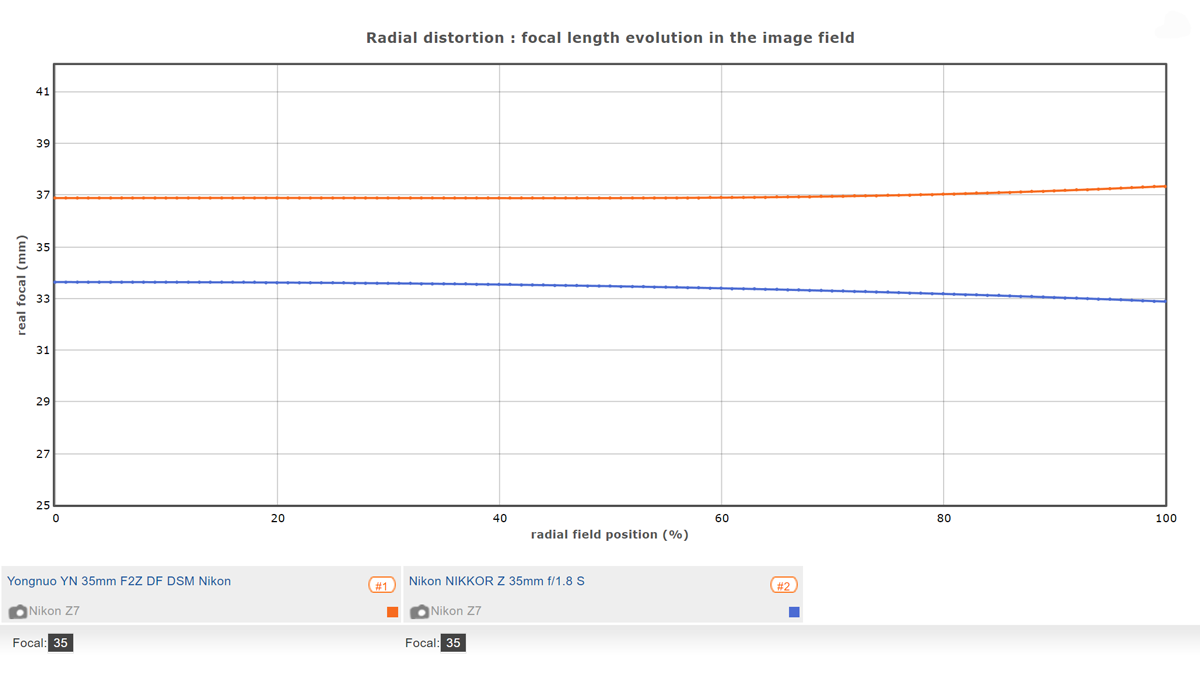The Yongnuo YN 35mm F2Z DF DSM is a compact and lightweight moderate wide angle lens that is available for the Nikon Z, but is also available for Canon RF and Sony E mounts, making it an interesting alternative to the camera makers’ in-house options. The Nikon version, which is the subject of this review, offers the same specifications as the variants for the other mounts, featuring 9 elements in 8 groups and low-dispersion glass, all wrapped up in an aluminum alloy body that uses a rubber seal at the rear mount for some weather protection.
A DSM motor allows for quiet focusing, which is useful for video capture, but manual focus operation is of course possible as well. A USB Type-C port is on board to facilitate user-friendly firmware updates. Overall, design, construction quality and feature set are very similar to Yongnuo’s 50mm and 85mm prime lens options.
Let’s see how the much more affordable YN 35mm F2Z DF DSM compares against Nikon’s own NIKKOR Z 35mm f/1.8 S in our DXOMARK Lens tests.
You can view the results for all tested lenses and create your own comparisons and in-depth analyses using our interactive image lens comparison tool.
Key specifications:
- Nine elements in eight groups
- Nano-multilayer coating process
- Seven blade aperture
- DSM AF motor
- 52 mm filter thread
- Minimum focus distance: 0.35 m (13.8″)
- Weight: 295 grams (0.65 lb)
Test results
We tested the Yongnuo YN 35mm F2Z DF DSM on the 46 MP Nikon Z7, where the camera sensor and lens together achieved a DXOMARK score of 38. This ties the score of Nikon’s own NIKKOR Z 35mm f/1.8 S which is more than double the price of the Yongnuo.
Overall, the Yongnuo YN 35mm F2Z DF DSM is a great option for budget-conscious Nikon Z photographers, offering better sharpness than the NIKKOR lens. However, stronger vignetting and more noticeable chromatic aberrations are drawbacks to keep in mind.

In addition to good sharpness at the center of the frame, astigmatism is well under control on the Yongnuo for Nikon when stopping the lens down a little. Distortion is well managed and chromatic aberration and vignetting are easily rectified in post processing, making the Yongnuo an enticing offer if you can spare a little extra time to optimize image quality after the shot.
In-depth comparisons
We compared the Yongnuo lens to the NIKKOR Z 35mm f/1.8 S, which was also tested on the Nikon Z7. The NIKKOR offers a slightly faster aperture than the Yongnuo. It’s also a little more compact and more lightweight, but overall, the two lenses are pretty close in terms of dimensions and weight. As mentioned above, the NIKKOR is significantly more expensive than the Yongnuo.
You can see an overview of this comparison in our database.
Sharpness
The Yongnuo YN 35mm F2Z DF DSM achieved very good results in our sharpness (acutance) tests. Center sharpness is good at 80% wide open. There is a noticeable drop-off towards the edges, though, where we measured just under 70% acutance. Stopping down increases sharpness across the frame, though, and best results are achieved at aperture F4.
When compared to the NIKKOR Z lens, the Yongnuo’s sharpness is slightly ahead, or at least on par, at pretty much all aperture settings. The difference is most noticeable at F2 and diminishes somewhat as both lenses are stopped down.
Chromatic aberration
Lateral chromatic aberration is controlled pretty well at the center of the frame at all aperture settings, but CA levels are higher towards the edges of the frame. Overall, the Nikon lens controls this image artifact better than the Yongnuo at all apertures.
Geometric distortion
Geometric distortion is kept within acceptable limits on the Yongnuo lens, but our measurements do show a slight negative distortion. Distortion on the NIKKOR is on a very similar level.
Vignetting (corner shading)
Vignetting is quite evident on images captured wide open with the Yongnuo YN 35mm F2Z DF DSM. Stopping down to F4 will mitigate the effect noticeably but some corner shading remains at all aperture settings. On the NIKKOR lens, vignetting wide open (F1.8) is approximately on the same level as on the Yongnuo at F2. Vignetting is less noticeable across the scale on the NIKKOR when comparing to the Yongnuo at the same aperture settings.
Transmission
The measured T-stop relative to the quoted F-stop is nice to know if you’re using your lenses for videography, but it isn’t really relevant for stills. Transmission may indicate how the lens handles flare and ghosting, but that’s not what is tested here. With a 2.2 T-stop measurement, the Yongnuo does not quite match the NIKKOR at 1.8, which is what you would expect given the different maximum aperture values. The Yongnuo shows approximately a -0.3 EV difference against the reported F-stop, the NIKKOR is closer to the reported value.
Conclusion
The Yongnuo YN 35mm F2Z DF DSM comes with a slightly slower aperture than Nikon’s NIKKOR Z 35mm f/1.8 S but delivers very good sharpness at the center of the frame and keeps distortion well under control. Our tests found chromatic aberrations and vignetting to be more noticeable on the Yongnuo lens than on the NIKKOR, but given the Yongnuo’s significantly more affordable price point, its overall performance is quite impressive, making it a great alternative any budget-conscious Nikon Z shooters.
In this review, we have compared the Yongnuo YN 35mm F2Z DF DSM mounted on a Nikon Z7 to its closest rivals from other brands. Remember that the lenses may be used on various cameras with different sensors, or in some cases on different camera systems using different mounts, so the results will vary between them.
As usual, you can create your own comparisons and in-depth analyses using our interactive image lens comparison tool.










DXOMARK encourages its readers to share comments on the articles. To read or post comments, Disqus cookies are required. Change your Cookies Preferences and read more about our Comment Policy.